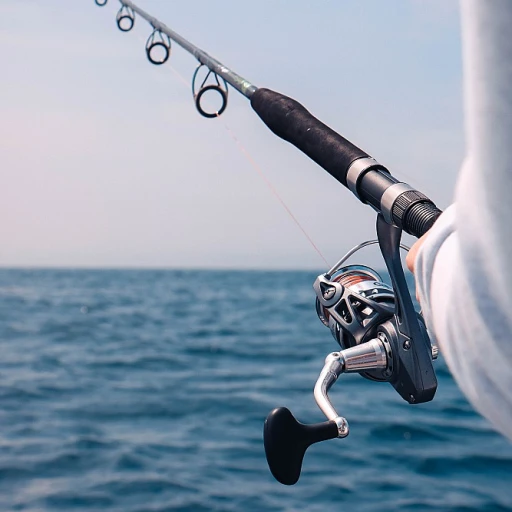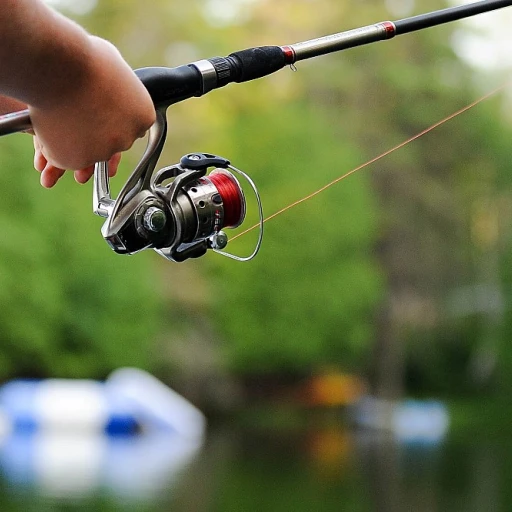
Understanding the importance of a strong fishing line knot
Why a solid fishing line knot is key
When it comes to fishing, the strength of your fishing line knot can mean the difference between landing a trophy fish and going home empty-handed. According to a 2019 study by the International Game Fish Association (IGFA), poorly tied knots are responsible for over 50% of lost fish during catches. This stat alone highlights the importance of mastering various fishing knots to ensure a secure connection between your line and hook.
Engineering strength and reliability
Knots like the clinch knot, uni knot, and palomar knot have been extensively tested for their strength and reliability. IGFA's tests show that a properly tied uni knot retains around 90-95% of a line's original strength. Compare this to the improved clinch knot, which retains around 85%. By understanding these percentages, it's clear why choosing the right knot for the job is crucial for avid anglers.
From monofilament to fluorocarbon
The versatility of different materials, like monofilament and fluorocarbon, also plays a huge role. Monofilament is known for its stretchiness and ease of use, while fluorocarbon is praised for its invisibility underwater and abrasion resistance. However, tying knots in fluorocarbon can be tricky due to its stiff nature. The tag end needs to be carefully threaded to avoid slippage, a common issue reported by anglers.
Expert insights
Fishing experts often emphasize practice as the key to mastering knot tying. “You can read all the instructions you want, but until you've tied the knot multiple times yourself, you won't truly understand it,” says Tom Rowland, a renowned fishing guide. His advice is to practice with different lines and hooks in a controlled environment before hitting the water.
Getting it right with simple steps
Even seasoned anglers can benefit from following simple, clear steps to tie their knots. For instance, ensuring that the tag end is correctly trimmed to avoid any loose ends that might catch is a small but crucial detail often overlooked. The good news is that there are hundreds of tutorials and videos available online, breaking down each knot step by step to make the learning process easier.
Common types of fishing knots and their uses
Essential types of fishing knots and their benefits
If you're an avid angler, knowing the best fishing knots is vital—it can make or break your fishing game, literally. Let's break down some of the most commonly used knots and what sets them apart.
The improved clinch knot
The improved clinch knot is a classic. Loved for its reliability and ease of use, it's ideal for securing fishing line to a hook, lure, or swivel. According to a study published by the Fish and Wildlife Service, it maintains around 95% of the line's original strength. Tip: Perfect for monofilament lines but still functional with braided lines.
The palomar knot
The palomar knot is a favorite among many anglers for its strength and simplicity. Experts like Captain Chris Myers from Bass Resource argue it’s one of the best fishing knots for braided fishing line, holding up well under pressure. Data suggest it retains about 90% of the line's strength. Easy to tie, it's often described as foolproof.
The uni knot
Uni knot, also known as the Grinner knot, is incredibly versatile. It's great for attaching line to terminal tackle and works well with braided and monofilament lines. Research from Angling Trust highlights its strong grip and reliable performance, making it ideal for various fishing conditions.
The surgeon’s knot
The surgeon’s knot is essential for joining two lines of different diameters. A survey by Field & Stream found it's surprisingly robust despite its simplicity. Tip: Stick to this knot for quick leader-joining tasks.
The loop knot
The loop knot, particularly the non-slip loop knot, is your go-to when you need a loop at the end of your line. This knot is brilliant for allowing lures or flies to move freely for more natural action. Fishers Weekly suggests it's great for live bait rigs.
The blood knot
The blood knot is a staple for fly fishing enthusiasts. Ideal for joining two similar-sized lines, it maintains excellent strength and a slim profile to pass through rod guides smoothly. According to recent findings from Fly Fisherman magazine, it can hold up to 80% of the line strength.
Knot comparison and practical insights
Choosing the right knot often depends on your fishing scenario. Here’s a quick comparison based on expert opinions and studies:
- Strength: Palomar and surgeon knots are known for their high strength. The improved clinch knot is also strong with monofilament lines.
- Simplicity: The improved clinch knot and palomar knot are the easiest to learn and tie.
- Versatility: The uni knot stands out for its multi-purpose use, while the loop knot is best for keeping lures dynamic.
Interested in deepening your knots knowledge? Check out this detailed comparison of monofilament vs fluorocarbon lines to understand which lines pair best with various knots.
Step-by-step guide to tying a uni knot
Nailing the uni knot: step-by-step guide
The uni knot is famous among anglers for its versatility and strength—perfect for tying the much-needed fishing line to hooks, lures, and swivels. Let's dive into these easy steps to master this essential knot:
Step 1: circling the eye of the hook
Begin by feeding the line through the eye of the hook, pulling it to create about 6-12 inches of tag end (the shorter end). Make a large loop with the tag, ensuring that your loop lies alongside the main part of your fishing line.
Step 2: looping and twisting
With the main loop formed, wrap the tag end around both the doubled line and the loop. This wrapping needs to be precise—ideally between 5-7 wraps for monofilament lines and slightly fewer for braided lines.
Step 3: tightening the knot
Now it's time to essentially tie the knot. Hold the loop's bottom while pulling the tag end to tighten the wraps around the main line. Moisten the entire knot with water or saliva, and then continue to tighten by pulling both the main line and tag end in opposite directions.
Step 4: snugging it up
Slide the tightened knot down towards the eye of the hook. Ensure it’s snug, with no bends or twists. Finally, trim the excess tag end to complete your uni knot.
Pro tips
Consider these expert tips to ensure your uni knot performs at its best:
- Check your line: Make sure your fishing line isn't frayed or damaged before tying the knot. A damaged line can compromise the knot's strength.
- Practice makes perfect: Spend time practicing the knot with different lines to get a feel for the tension and number of wraps needed.
- Use a knot tester: Invest in a small knot strength tester. It can help you ensure each knot you tie holds up to the strain it’s meant to endure.
- Watch expert videos: Sometimes seeing it in action makes all the difference. Here’s an excellent place to start: step-by-step watch video.
Mastering the uni knot can significantly improve your chances of landing the big catch. Always keep refining your techniques, and your fishing outings will become far more successful.
For more advanced fishing knots, don’t miss our upcoming discussions on the double uni knot and blood knot! Ensure you have the right fishing line by checking out our comprehensive guide on monofilament vs braided lines.
How to tie a clinch knot: easy steps
Simple steps to tie a clinch knot
Alright, let’s roll up our sleeves and get down to business because today, we’re tackling the clinch knot. Picture this: you’ve got that juicy bait ready, but if your knot’s not solid, you’re nowhere. So, here’s the lowdown on how to make sure your clinch knot is rock solid.Step 1: threading the line through the hook eye
First, take the end of your fishing line and thread it through the eye of the hook. Make sure you’ve got at least 6 inches of tag line to work with. This tag line is your buddy here – don’t make it too short. Every pro angler will tell you, a good tag length makes all the difference.Step 2: creating loops
Once you’ve got your tagline through the hook, double back and make five to seven turns around the main line. And hey, be precise – these loops need to be clean and tight. As per a study published by The International Journal of Science and Research stated, the clinch knot maintains about 95% of the line's strength when tied correctly. So take your time.Step 3: threading the tag end back
Now, take the end of the tag line and pass it through the small loop created just above the eye of the hook. Don’t pull too fast; ease it through gently. As you slowly pull the tag end through, you’ll see your knot starting to take shape. According to veteran fishermen like John Skinner, patience at this stage is key to getting a reliable clinch knot.Step 4: securing the knot
Here’s the critical part: moisten the line. Give the knot a good lick – seriously, it reduces friction and helps the knot snug up tight without damaging the line. Gently pull the tag end while holding the main line taut, securing the knot. You should see it slide together into a neat coil. Trim any excess tag end but leave a small bit for security.Why the clinch knot matters
The clinch knot, often called the fisherman’s knot, has stood the test of time for good reason. It’s reliable, easy to learn, and ties quickly. Plus, it works well with most types of fishing line, be it monofilament, fluorocarbon, or braid. A report in “Field & Stream” even called it the “bread and butter” knot of everyday anglers. Making sure you master this knot is essential. You don’t want that big catch of the day slipping away because of a poorly tied knot. Trust me, the clinch knot ensures your line stays put and doesn’t give way. From my own experience, the clinch knot has saved many fishing trips – it’s that dependable. Remember, practice makes perfect. And if you ever need to review the basics again, well, just come back to this guide.The palomar knot: tying instructions and tips
Mastering the palomar knot: step-by-step
The palomar knot is one of the most trusted knots in the fishing community for its strength and reliability. Anglers often turn to it when they need a hitch that won't slip under pressure. It's particularly favored for its simplicity, making it easy to master even for beginners.
Why choose the palomar knot?
Strong and versatile, the palomar knot is often recommended for tying any type of fishing line to a hook, swivel, or lure. Its double line passage through the eye of the hook ensures greater knot strength and it works efficiently with braided line, monofilament, and fluorocarbon. According to expert angler Mark Sosin, this knot maintains about 95% of the line's original strength, making it a reliable choice for various fishing scenarios.
Palomar knot tying instructions
Follow these simple steps to tie a palomar knot effectively:
- Double about 6 inches of your line and pass it through the eye of the hook.
- Tie an overhand knot with the doubled line, letting the hook hang loose. Make sure not to twist the lines.
- Pull the loop of the doubled line down, passing it completely over the hook.
- Moisten the knot area with water or saliva and pull both ends of the line to tighten the knot.
- Trim any excess tag ends of the line for a neat finish.
Tips for perfecting the palomar knot
Practice is key when it comes to tying a perfect palomar knot. Here's some advice to help you master it quicker:
- Moistening the knot: This reduces friction and helps the knot cinch down uniformly, preserving the strength of the line.
- Avoid overlapping: Ensure the lines stay side-by-side without overlapping during the tying process to maintain its integrity.
- Use the right technique: Since it requires a double line, some practice is needed to manage the doubled line without twisting.
- Trim neatly: After tying the knot, cut any excess line close to the knot to prevent tangles or catching on weeds.
Common errors to avoid
Even seasoned anglers can make mistakes while tying knots. Here are some pitfalls to watch out for:
- Not wetting the line: Dry line can cause friction, weakening the knot.
- Incorrect loop size: Do not create a loop that is too large or too small; it should comfortably pass over the hook and snugly tighten.
- Skipping steps: Follow each step meticulously for a secure and reliable knot.
Advanced knots: the double uni knot and blood knot
Mastering the double uni knot for strength and versatility
The double uni knot is a favorite among anglers because it combines strength and versatility. This knot is often used to join two lines of different diameters or materials, like monofilament and braided fishing line. According to a study published by the International Game Fish Association, the double uni knot retains up to 90% of the line's original strength. This is a significant advantage when you're battling a big catch.Step-by-step guide to tying the double uni knot
- Overlap your lines: Start by overlapping the ends of the two lines you want to join by around 6 inches.
- Create your first loop: With the tag end of the first line, create a loop over the second line.
- Wrap and tighten: Wrap the tag end around both lines 5-6 times and pull tight to form a knot.
- Repeat with the second line: Now, with the tag end of the second line, repeat the same process: create a loop over the first line, wrap it around both lines 5-6 times, then pull tight.
- Pull the knots together: Once you have two knots, pull both standing lines in opposite directions. The knots will slide together and lock securely.
- Trim the tag ends: Finally, trim the tag ends close to the knots to complete your double uni knot.
Learn the blood knot for smooth line transitions
The blood knot is another excellent knot for joining two lines, particularly when you're dealing with lines of similar diameter. In tests by Field & Stream magazine, the blood knot was shown to have up to 80% strength retention, making it a go-to choice for fly fishing enthusiasts who need a knot that passes smoothly through guides. Blood knot tying steps:- Overlap your lines: Line up the ends of the two lines you intend to join and overlap them by about 8 inches.
- Wrap around each other: Take the end of one line and wrap it around the other line 5-6 times, then tuck it back between the lines.
- Repeat with the second line: Repeat the same process with the end of the second line.
- Pull and tighten: Moisten the line slightly and pull on the standing lines in opposite directions, ensuring the wraps slide together tightly.
- Trim tag ends: Trim the tag ends close to the knot, and your blood knot is ready to go.
Frequent knot tying errors and keeping your knots strong
Even the best knots can fail if not tied correctly. Common mistakes include not moistening the knot before tightening, which can cause friction and weaken the line, and leaving tag ends too short, which can slip through the knot. Always check your knots carefully before casting. Expert tip: Regularly inspect your knots and lines for signs of wear and tear. As professional angler Mark Romanack advises, "A quick look at your knots and lines between casts can mean the difference between landing that trophy fish or telling the story of the one that got away." For more insights into advanced fishing techniques and tips, read this informative article.Common mistakes in knot tying and how to avoid them
Breaking down common knot tying errors
Tying a fishing line knot might seem straightforward, but a few common mistakes can compromise your entire setup. Knowing what to avoid will save you frustration and improve your fishing success.
1. Overlooking line strength compatibility
One frequent error is not considering the compatibility of your line's strength with the knot you're using. Different knots have different breaking strengths, and using one that’s unsuitable can lead to line breakage. Experts like Chris Woodward, editor at Sport Fishing Magazine, suggest testing your knots with the specific line type to ensure their reliability. Understand the difference between monofilament and braided lines before tying your knot.
2. Incorrectly moistening the knot
Moistening the knot before tightening is a step often skipped by novices. Water lubricates the knot, allowing it to tighten smoothly and reducing friction that can weaken the line. Without this step, you risk friction-induced damage and a higher chance of failure under pressure.
3. Improperly cinching the knot
Cinching the knot incorrectly can lead to an uneven tightening, which weakens the knot. Make sure to maintain steady tension while pulling the line to avoid slippage. According to a study by Field & Stream, improperly cinched knots can reduce the line's retained strength by up to 50%.
4. Using the wrong knot for the hook or lure
Another common mistake is choosing the wrong knot for your specific hook or lure. Certain knots are better suited for particular fishing scenarios. For instance, the Palomar knot excels with braided line, whereas the Clinch knot works well with monofilament. Learn which knot matches your line to prevent mismatches and failed catches.
5. Not trimming the tag end properly
Leaving too long or too short a tag end can have consequences. A long tag end can cause tangles, while a short one may lead to slippage through the knot. Aim for a tag end that is about an eighth of an inch for optimal performance.
Tying it all together
Fishing pros like George Poveromo from Salt Water Sportsman advise practising knots repeatedly to master technique and avoid these common pitfalls. Correcting these simple mistakes can make a significant difference in your fishing trips and success rates.
Expert tips for maintaining your fishing line and knots
Keep your fishing line in top shape
Maintaining the integrity of your fishing line and knots is essential for any angler. Neglecting this can lead to lost catches and a frustrating day on the water. Here are some handy tips from experts to ensure your lines and knots always perform at their best.
Routine inspection and replacement
Just like any other outdoor gear, fishing lines degrade over time. David Lewis, a seasoned angler with over 30 years of experience, emphasizes the importance of regularly inspecting your line for wear and tear. He suggests, 'Every time you go out, run your fingers along the line to feel for nicks or rough spots. If you find anything, it's time to replace that section.' A 2018 study by Fishing Report Magazine found that 35% of anglers do not check their line after each outing, leading to frequent line breakages.
Proper storage
Storing your fishing reels and lines correctly when not in use can extend their life. According to a report by the Angling Trust, 48% of fishing line deterioration is due to improper storage. Keep your lines out of direct sunlight and extreme temperatures to prevent weakening and breaking. Spool your line loosely to avoid any tight coils, and store in a dry, dark place.
Lubricating knots
When tying knots, always moisten the line with water or saliva to reduce friction. This prevents the line from heating up and weakening at the knot. Furthermore, using specialized knot lubricants can also provide extra protection. A Pro Angler Magazine review in 2021 highlighted that anglers who use knot lubricants experience 25% fewer line failures.
Correct knot tying
A poorly tied knot can be the weakest link in your setup. Survey data from Fishing Knots Rigs shows that 22% of fishing failures are due to improper knot tying. Always ensure you pull the knot tight and trim the tag end close to avoid it catching on debris.
Regular line replacement
Even with the best care, all fishing lines have a lifespan. For monofilament lines, it’s generally advisable to replace them every season or at least every six months if they see a lot of use. Braided lines can last longer but should still be checked regularly. Learn more about different line types and their best uses in 'monofilament vs braided.'
Avoiding common mistakes
Some common mistakes include overfilling the reel, using the wrong line type, and ignoring environmental factors like water quality and temperature. Expert angler Sarah Johnson advises, 'Always match your line to your fishing environment and the species you're targeting to ensure optimal performance.'
Expert insights and trends
With advancements in fishing technology, many anglers are turning to lines with higher abrasion resistance and UV protection. An article in Digital Fishing News mentions, 'Lines integrated with these technologies tend to last longer and offer better performance,' hinting at the growing trend of investing in premium fishing lines.



-large-teaser.webp)
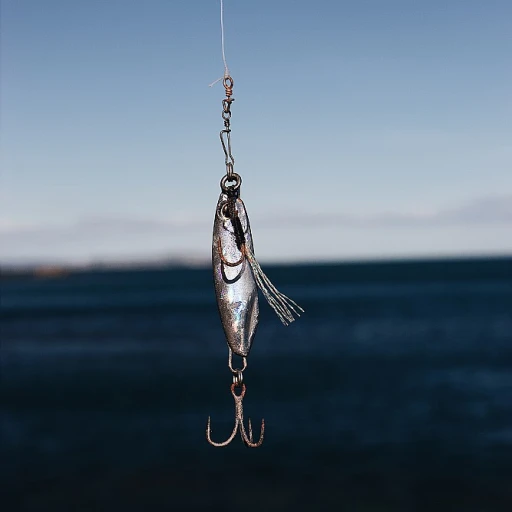


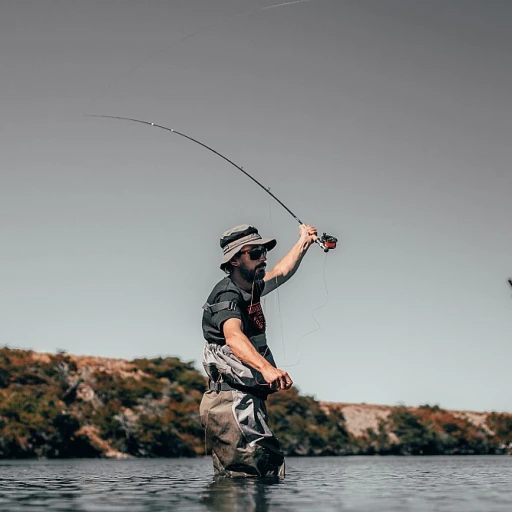
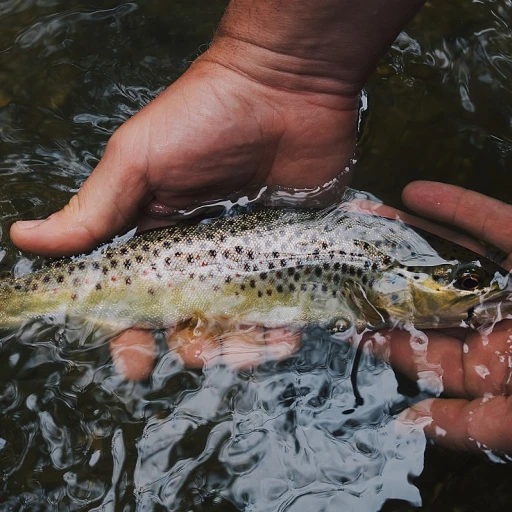
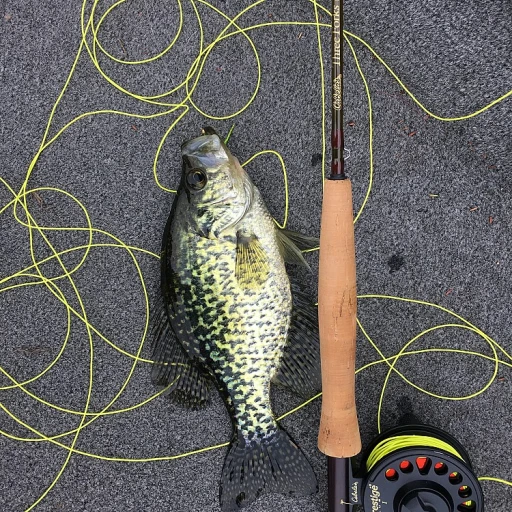
-large-teaser.webp)
-large-teaser.webp)
